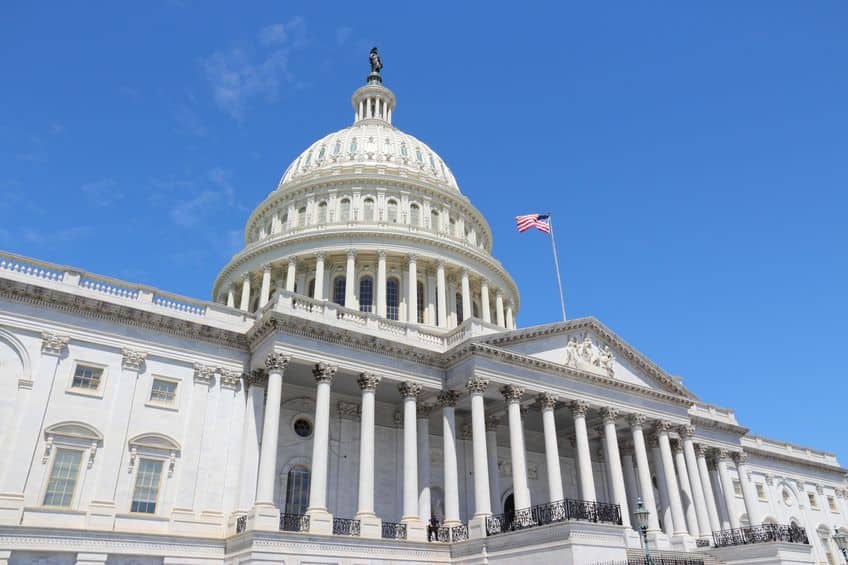If you are unsure about how to plan ahead for long term care expenditures, you are in good company. While very wealthy individuals may assume that they can comfortably plan to pay for related costs with their own funds, the matter of rising healthcare costs and inflation must be reviewed carefully. Some well-off individuals may need to utilize Medicaid benefits as part of their long-term care plans.
For most individuals with a middle-class income, including those who have amassed reasonable wealth through years of hard work and who are planning for a comfortable retirement, paying for long-term care becomes more challenging. Some people plan to pay for care expenses on their own, such as by selling their house if this type of care is needed. Others may purchase long-term care insurance. However, many long-term care insurance plans are expensive and may not provide the full benefits that people need. In addition, premium increases are common, and they may become unaffordable well before the insurance benefits are needed. An alternative is a hybrid life insurance policy that offers long-term care benefits, but this solution also has financial drawbacks.
Many Americans will require long term care at some point in their lives. As you will see in the following statistics typically people ages 65 and older begin to see a need for some assistance. Given the high cost of care, you cannot afford to move forward without establishing a reasonable plan to pay for related expenses. There is not a plan that is universally appealing to everyone, so you must understand the situation and options fully before you can develop a plan that is well-suited for your needs and financial situation. Reviewing current long-term care facts and statistics may help you to determine the most strategic plan suitable for you.
Table of Contents
- Long-Term Care Usage and Needs
- Long-Term Care Costs
- Long-Term Caregiving
- Federal and State Funding for Long-Term Care
- Long-Term Care Insurance
- The Bottom Line
Long-Term Care Usage and Needs
1) 48%: Percentage of adults who are 65 years or older who will require long-term care for up to 12 months, 2018 – U.S. Department of Health and Human Services
2) 19%: Percentage of adults who are 65 years or older who will require long-term care for between 12 and 24 months, 2018 – U.S. Department of Health and Human Services
3) 21%: Percentage of adults who are 65 years or older who will require long-term care for between 2 and 4.9 years, 2018 – U.S. Department of Health and Human Services
4) 13%: Percentage of adults who are 65 years or older who will require long-term care for more than 5 years, 2018 – U.S. Department of Health and Human Services
5) 70%: Percentage of adults who are 65 years old who will require some level of long-term care throughout the rest of their life, 2018 – U.S. Department of Health and Human Services
6) 19 years, 3 months: The longest period of time a male has received long-term care, 2019 – American Association for Long-Term Care Insurance Survey
7) 18 years, 1 month: The longest period of time a female has received long-term care, 2019 – American Association for Long-Term Care Insurance Survey
8) 5.8 Million: The number of Americans currently living with Alzheimer’s disease or dementia, 2019 – Alzheimer’s Association
9) 200,000: The number of Americans under the age of 65 years old who have been diagnosed with early-onset Alzheimer’s disease, 2019 – Alzheimer’s Association
10) 5: The rank of Alzheimer’s disease for the overall cause of death among those who are 65 years or older, 2019 – Alzheimer’s Association
11) 6: The rank of Alzheimer’s disease for overall cause of death among all age groups, 2019 – Alzheimer’s Association
12) 4 to 8 Years: The amount of time an individual is expected to live after being diagnosed with Alzheimer’s disease, 2019 – Alzheimer’s Association
13) 8,357,100: The number of people who receive long-term care from all sources, 2015 – CDC – Long-Term Care Services
14) 4,742,500: The number of people who receive long-term care from home health agencies, 2015 – CDC – Long-Term Care Services
15) 1,383,700: The number of people who receive long-term care in a nursing home, 2015 – CDC – Long-Term Care Services
16) 1,244,500: The number of people who receive hospice care, 2015 – CDC – Long-Term Care Services
17) 713,000: The number of people who live in a residential care community, 2015 – CDC – Long-Term Care Services
18) 273,200: The number of people who use adult daycare service centers, 2015 – CDC – Long-Term Care Services
19) 63%: Percentage of people needing long-term care services who are 65 years old or older, 2003 – Long-Term Care Financing Project, Georgetown University Press
20) 37%: Percentage of people in need of long-term care services who are under the age of 65, 2003 – Long-Term Care Financing Project, Georgetown University Press
21) 68%: Probability of an individual who is 65 years old or older of becoming physically or cognitively impaired, 2003 – AARP
22) 27 Million: Estimated number of people who will pay for long-term care services by 2050, 2003 – U.S. Department of Health and Human Services, and U.S. Department of Labor
23) 1 in 3: The number of seniors who pass away with dementia or Alzheimer’s disease, 2019 – Alzheimer’s Association
24) Every 65 Seconds: The rate at which new patients are diagnosed with dementia or Alzheimer’s disease in the United States, 2019 – Alzheimer’s Association
25) 9 Hours: Average hours per day of assistance that an elderly adult with substantial physical and cognitive disabilities receives from both formal and information care sources, 2002 – Home Services Research
26) 11 Hours: Average hours per day of assistance that an elderly adult who is 85 years old or older with substantial physical and cognitive disabilities receives from both formal and informal care sources, 2002 – Home Services Research
27) 85 Years: Average life expectancy in the United States, 2019 – American Association for Long-Term Care Insurance

Long-Term Care Costs
28) $85,800: The median overall cost of nursing home services in the United States, 2018 – Genworth, AARP
29) $150,200: The median overall cost of nursing home services in Connecticut, which has the most expensive costs in the country, 2018 – Genworth, AARP
30) $54,800: The median overall cost of nursing home services in Texas, which as the least expensive costs in the country, 2018 – Genworth, AARP
31) $45,188: The median overall cost of home health services in the United States, 2018 – Genworth, AARP
32) 13%: Percentage of adults who will pay up to $50,000 in lifetime long-term care expenses out of their own pocket, 2018 – U.S. Department of Health and Human Services
33) 11%: Percentage of adults who will pay between $50,000 and $150,000 in lifetime long-term care expenses out of their own pocket, 2018 – U.S. Department of Health and Human Services
34) 13%: Percentage of adults who will pay at least $150,000 in lifetime long-term care expenses out of their own pocket, 2018 – U.S. Department of Health and Human Services
35) 1 in 4: The number of adults who are 45 years old or older who are financially unprepared for long-term care expenses, 2015 – AARP
36) $50,340: Average annual cost for a home healthcare provider, 2018 – Genworth
37) 1.51%: Annual percentage increase for the hourly rate for home healthcare services, 2018 – Genworth
38) $100.380: Average annual cost for a private patient room in a skilled nursing facility, 2018 – Genworth
39) 3.16%: Annual percentage increase for the cost of a private patient room in a skilled nursing facility, 2018 – Genworth
40) $89,292: Average annual cost for a semi-private patient room in a skilled nursing facility, 2018 – Genworth
41) 3.2%: Annual percentage increase for the cost of a semi-private patient room in a skilled nursing facility, 2016 – John Hancock Cost of Care Survey
42) $18,720: Average annual cost for adult daycare, 2018 – Genworth
43) 1.6%: Annual percentage increase for the annual cost of adult daycare expenses, 2016 – John Hancock Cost of Care Survey
44) $48,000: Average annual cost for assisted living facility care, 2018 – Genworth
45) 3.81%: Annual percentage increase for the annual cost of assisted living facility care, 2018 – Genworth
46) $2,276,381: The largest claim paid for a male patient, 2019 – American Association for Long-Term Care Insurance Survey
47) $2,636,417: The largest claim paid for a female patient, 2019 – American Association for Long-Term Care Insurance Survey
48) $290 Billion: The estimated cost to the United States for patients with Alzheimer’s disease or dementia, 2019 – Alzheimer’s Association
49) $350,174: The average lifetime cost of care for an individual who has dementia, 2018 – Alzheimer’s Association
50) 70%: Percentage of long-term care costs that are absorbed by families, 2019 – Alzheimer’s Association
51) $346 Billion: The estimated long-term care costs of Americans by 2040, 2013 – The Scan Foundation

Long-Term Caregiving
52) 16 Million: The number of Americans who provide unpaid care to an individual with Alzheimer’s disease or dementia, 2019 – Alzheimer’s Association
53) 27.3 Million: The number of family caregivers who care for an adult with a chronic illness or a disability, 2002 – American Association of Geriatric Psychiatry
54) 65.7 Million: The number of family and informal caregivers who provide care to an elderly, ill or disabled individual in the United States, 2015 – National Alliance for Caregiving, AARP
55) 52 Million: The number of caregivers who provide care for an adult who is at least 18 years old, 2015– J. Coughlin
56) 2 out of 3: The number of disabled individuals who receive long-term support services entirely from a family caregiver, 2015 – P. Doty, Public Policy and Aging Report
57) Two-Thirds: The number of elderly adults with a severe disability who receive all of their care from a family member, 2015 – National Health Interview Surveys on Disability by Health Policy Institute, Georgetown University
58) 18.5 Billion: The number of unpaid hours that caregivers provided to individuals with Alzheimer’s disease or dementia, 2019 – Alzheimer’s Association
59) $234 Billion: The estimated value of care that unpaid caregivers provided to those with Alzheimer’s disease or dementia, 2019 – Alzheimer’s Association
60) 25%: Percentage of caregivers who care for children under the age of 18 years old and for a patient with Alzheimer’s disease or dementia, 2019 – Alzheimer’s Association
61) $283,716: Average lifetime lost income and benefits for a male caregiver, 2015 – AARP
62) $324,044: Average lifetime lost income and benefits for a female caregiver, 2015 – AARP
63) 30%: Percentage of caregivers who are 65 years old or older and who are responsible for the long-term care of another elderly individual, 2015 – Long-Term Care Project
64) 15%: Percentage of adults who are between the ages of 45 and 54 years old who are responsible for the care of an elderly person, 2015 – Long-Term Care Project
65) 80%: Percentage of elderly adults requiring long-term care who live in a private home, 2015 – Congressional Budget Office
66) 63%: Percentage of caregivers who pay for care using their personal savings or retirement funds, 2018 – Genworth
67) 48%: Percentage of caregivers who reduced their quality of life to pay for care expenses, 2018 – Genworth
68) 29%: Percentage of caregivers who report increased care expenses since 2013, 2018 – Genworth
69) 53%: Percentage of caregivers whose stress level has increased as a result of providing care, 2018 – Genworth
70) 46%: Percentage of caregivers who believe their health and well-being has been negatively impacted by providing care, 2018 – Genworth
71) 41%: Percentage of caregivers who have experienced feelings of depression and resentment related to providing care, 2018 – Genworth
72) 40%: Percentage of caregivers who report that providing care has negatively impacted their relationship with their spouse or partner, 2018 – Genworth

Federal and State Funding for Long-Term Care
73) $195 Billion: The total estimated cost of Medicare and Medicaid payments that are associated with Alzheimer’s disease or dementia, 2019 – Alzheimer’s Association
74) 7%: Percentage of people who receive Medicaid benefits for assisted living expenses, 2011 – AARP
75) 31.9%: Percentage of annual home care expenses that are paid for with Medicare funds, 2004 – National Association for Home Care
76) 18%: Percentage of annual home care expenses that are paid for with Medicaid funds, 2004 – National Association for Home Care
77) 55%: Percentage of long-term care funding from Medicaid that was used for institutional care, 2015 – SCAN Foundation
78) $16.4 Billion: Medicaid funds that are applied to long-term care expenses at home or through community-based service programs, 2002 – Kaiser Commission on Medicaid and the Uninsured
79) $83.8 Billion: Medicaid funds that are applied to long-term care expenses in all settings, 2004 – The Medstat Group
80) 57%: Percentage of Medicaid spending for adults who are 65 years old or older, 2000 – U.S. Department of Health and Human Services: Office of Disability, Aging and Long-Term Care Policy

Long-Term Care Insurance
81) $2,050: The average annual premium for long-term care insurance for a 55-year-old male, 2019 – American Association for Long-Term Care Insurance
82) $2,700: The average annual premium for long-term care insurance for a 55-year-old female, 2019 – American Association for Long-Term Care Insurance
83) $3,050: The combined premium for long-term care insurance for a couple when both individuals are 55 years old, 2019 – American Association for Long-Term Care Insurance
84) $1,925: The annual premium for a 60-year-old male with an initial pool of benefits equivalent to $164,000 and $386,500 when the insured is 85 years old, 2019 – American Association for Long-Term Care Insurance
85) $3,050: The annual premium for a 60-year-old female with an initial pool of benefits equivalent to $164,000 and $386,500 when the insured is 85 years old, 2019 – American Association for Long-Term Care Insurance
86) $3.040: The combined annual premium for long-term care insurance for a couple when both individuals are 60 years old and with an initial pool of benefits equivalent to $164,000 and $386,500 when the insured is 85 years old, 2019 – American Association for Long-Term Care Insurance
87) $8,100: The combined annual premium for a hybrid insurance policy with life and long-term benefits for a 55-year-old couple, 2018 – Scott Olson
88) $13,800: The combined annual premium for a hybrid insurance policy with life and long-term benefits for a 65-year-old couple, 2018 – Scott Olson
89) 43%: Percentage of long-term care insurance benefits that are used for home care expenses, 2019 – American Association for Long-Term Care Insurance
90) 13.5%: Percentage of long-term care insurance claims that end because benefits have been exhausted, January 2019 – American Association for Long-Term Care Insurance
91) 72.5%: Percentage of long-term care insurance claims that end because of death, January 2019 – American Association for Long-Term Care Insurance
92) 14% – Percentage of long-term care insurance claims that end because of recovery, January 2019 – American Association for Long-Term Care Insurance
93) 43%: Percentage of long-term care insurance claims that ended in a home care setting, 2019 – American Association for Long-Term Care Insurance
94) 29.5%: Percentage of long-term care insurance claims that ended in a nursing home facility, 2019 – American Association for Long-Term Care Insurance
95) 26.5%: Percentage of long-term care insurance claims that ended in an assisted living facility, 2019 – American Association for Long-Term Care Insurance
96) 64%: Percentage of long-term care insurance claims for female patients, January 2019 – American Association for Long-Term Care Insurance
97) 29.3%: Percentage of long-term care insurance claims that begin before the patient is 81 years old, January 2019 – American Association for Long-Term Care Insurance
98) 18%: Percentage of home care expenses that are paid for with private insurance or out-of-pocket, 2003 – National Association for Home Care
99) 44%: Percentage of applicants between the ages of 70 and 79 years old who are denied long-term care insurance coverage, January 2019 – American Association for Long-Term Care Insurance
100) 30%: Percentage of applicants between the ages of 60 and 69 years old who are denied long-term care insurance coverage, January 2019 – American Association for Long-Term Care Insurance
101) 42%: Percentage of applicants age 59 or younger who are denied long-term care insurance coverage, January 2019 – American Association for Long-Term Care Insurance
The Bottom Line
The high cost of long-term care services outside the home whether in an assisted living facility or by nursing home care can be overwhelming and prohibitive – especially if you have a private room. Because of this, many adults who need long-term care receive assistance at home from an unpaid caregiver, such as a family member. However, this can have a negative impact on the caregiver, including missed career opportunities, stress on personal relationships, and a burden on their finances. While there is not a perfect solution that is right for everyone, it is clear that older adults need to plan ahead for their potential long-term care needs. More than that, long-term care is often needed well before an adult reaches the age of 65 years old and care may be needed past age 85. With this in mind, long-term care planning requires prompt attention.












